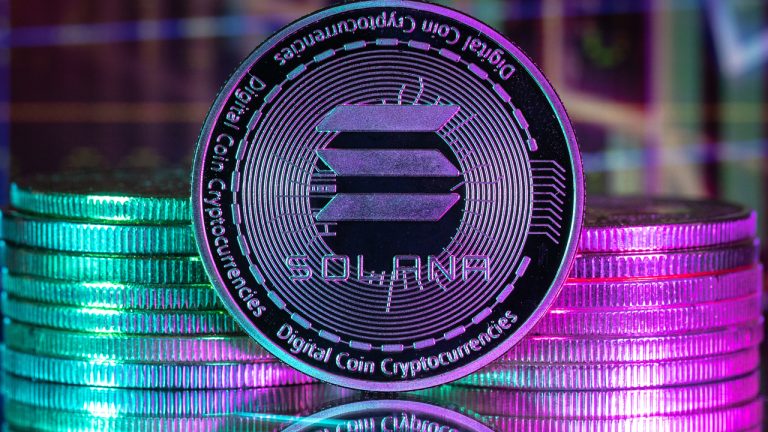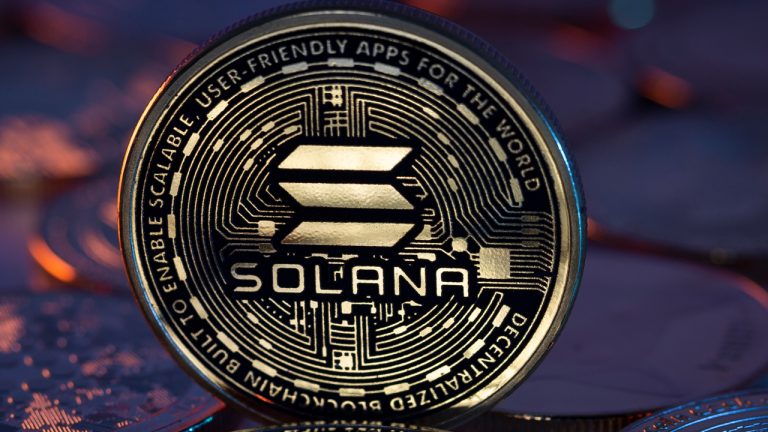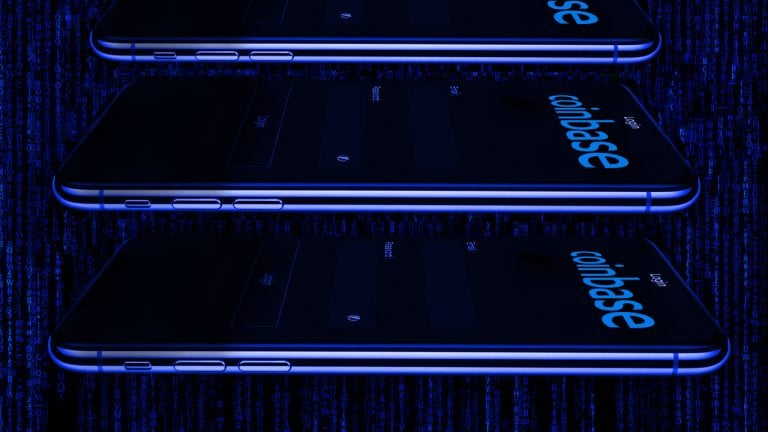
A core developer of popular meme asset Dogecoin (DOGE) is unveiling widespread updates to the blockchain as a means of making development on the protocol easier. In a new announcement, DOGE developer Michi Lumin tells their 32,000 Twitter followers that many changes are coming to the project, including support for QR codes, other languages, message […]
The post Dogecoin (DOGE) Unveils Massive Update To Ease Development of the Leading Meme Coin appeared first on The Daily Hodl.

Coinbase announces that unstaking requests may take weeks to months to process as they are not in charge of ETH unstaking process.
Ether (ETH) stakers who have had their holding locked up during the Ethereum Merge event might soon have access to unstaking.
Coinbase has announced in a tweet that unstaking requests on their platform may take the protocol weeks to months to process. According to the tweet, they expect a flood of staking withdrawal requests after the update in the Ethereum network enable the functionality next month.
The Ethereum Merge, transitioned the network from proof-of-work (PoW) to proof-of-stake (PoS) in September 2022, but stakers’ holdings remained locked up. This merger created a temporary situation in which staking providers like Coinbase allow users to stake ETH on their platform – but not to withdraw them.
Expected to arrive in mid-April, Ethereum's Shapella upgrade will enable users to withdraw their staked ETH, or "unstake" it. ETH holders can also stake more without being subject to an indefinite lockup period
7/ We anticipate that demand for unstaking will be high soon after the upgrade and it may take the protocol weeks to months process unstaking requests.
— Coinbase (@coinbase) March 15, 2023
Coinbase noted that staking requests are processed on-chain, and the firm will only act as a channel to pass unstaked ETH to customers once released by the protocol.
Coinbase explained, “Unstaking requests will open to all Coinbase customers at the same time and will be relayed to the Ethereum protocol and queued based on when they are received.”
Once the upgrade is finished, users will be able to make unstaking requests from their Coinbase accounts, which will become available after approximately 24 hours. However, customers should anticipate a considerable wait time even after submitting the request.
Coinbase cannot give customers an exact timeframe for unstaking because they don't have control over the process. They have given an estimate based on the time it takes for the Ethereum network to process transactions, but customers should be prepared to wait and be patient.
Related: Ethereum price reaches lowest level relative to Bitcoin in 5 months
To account for the inconvenience, Coinbase provides its users a liquid staking option called “cbETH” as a derivative of staked ETH on the platform, letting stakers effectively trade ETH while it is still locked up, with the promise of redeemability at a later date.

Ethereum validators are now one step away from being able to unstake their Ether from the Beacon Chain.
The Shapella hard fork has been executed on the Goerli testnet — the last test run before Ethereum validators will be able to withdraw their Ether (ETH) from the Beacon Chain.
There were, however, issues with the hard fork. Ethereum core developer Tim Beiko noted that while deposits were being processed, the process didn’t run as smoothly as it could have because several testnet validators didn’t upgrade their client software before the Goerli fork.
Deposits are being processed (https://t.co/CxYtPcGMCp), but it seems like several validators haven't upgraded. Looking into it
— timbeiko.eth (@TimBeiko) March 14, 2023
One challenge with testnet validators is that given the ETH is worthless, there's less incentive to run a validator/monitor it.
He blamed it on testnet validators having “less incentive” to make the upgrade given that the Goerli “ETH is worthless” but expects validators to make proper adjustments ahead of the fork on the Ethereum mainnet.
Through Ethereum Investment Proposal EIP-4895, staked ETH from the Beacon Chain will be “pushed” to the execution layer.
While the Shapella upgrade comprises five different EIPs, EIP-4895 has been by far the most anticipated one, as it moves Ethereum one step closer to a fully functional proof-of-stake system.
Shapella is now expected to take effect on the Ethereum mainnet in early April.
Related: Ethereum Shanghai upgrade could benefit liquid staking providers and cement ETH's layer 1 dominance.
The execution on Goerli was shared in a March 15 live stream by EthStaker on YouTube.
We're going LIVE in ~10 minutes to discuss the Goerli Shapella Upgrade
— r/EthStaker (@ethStaker) March 14, 2023
Watch here https://t.co/PDFvmqyFGM
This is a developing story, and further information will be added as it becomes available.

The Ethereum ecosystem is edging closer to its latest milestone as the Shanghai upgrade draws near.
The Ethereum ecosystem will continue its ongoing metamorphosis as the highly anticipated Shanghai upgrade draws near. The latest preeminent smart contract blockchain protocol improvement will activate Ether (ETH) withdrawals from Ethereum’s Beacon Chain.
The Merge marked a significant milestone for the Ethereum network in 2022, with the blockchain platform shifting from proof-of-work to proof-of-stake consensus. That change introduced validators as the new “miners” of the network, with staking ETH becoming a key component in maintaining the network.
While full validators were required to stake 32 ETH to process transactions and add new blocks to the network, the broader ecosystem could stake smaller amounts of ETH to earn a share of rewards — much like an investor that puts capital into interest-bearing accounts.
Those that locked up ETH to become validators have been unable to withdraw their staked holdings from the Beacon Chain. This changes with the Shanghai upgrade, and is a major reason for the increased fanfare around the latest change to the Ethereum network.
The Shanghai upgrade features a handful of Ethereum Improvement Proposals (EIPs) in addition to activating staking withdrawals. Cointelegraph reached out to members of the ConsenSys team, the Ethereum Foundation and analytics firm Nansen to unpack all aspects of the upcoming milestone.
The upcoming changes feature two simultaneous upgrades amalgamated to encompass all facets of the upgrade.
Shanghai refers to changes to Ethereum’s execution layer, mainly enabling staked ETH to be deposited to execution layer wallets. The Shanghai upgrade requires a simultaneous change to the Beacon Chain, which has been dubbed Capella.
Justin Florentine, a staff protocol engineer for ConsenSys’ Hyperledger-Besu, further explained the combined upgrades at the execution and consensus layers:
“It is doubly named because it is the first simultaneous upgrade of Ethereum’s execution layer and consensus layer, and is highly anticipated because it will enable staked ETH withdrawals.”
Within the Ethereum ecosystem, execution layer upgrades are named after cities that have hosted Devcon events, while consensus layer upgrades are named after stars. Therefore the upcoming upgrade’s technical name is Shapella, combining Shanghai and Capella.
Nevertheless, given the focus on activating staked ETH withdrawals, the wider cryptocurrency ecosystem refers to the looming upgrade as Shanghai. As Beiko explained, Shanghai closes an important chapter in Ethereum’s evolution:
“It’s better to think of Shanghai as ‘finishing the Merge’ than related to future upgrades. We didn’t introduce withdrawals during the Merge because that upgrade was already the most complex in Ethereum’s history.”
As has been highlighted by several analysts and Ethereum developers, Shanghai features five EIPs. EIP-4895 will enable users to withdraw from the Ethereum staking contract, which had previously been locked.
Reward payments will be sent automatically to withdrawal addresses at regular intervals to validators. Users also have the option to exit staking entirely, which will return their entire validator balance.
Ethereum's Shanghai upgrade will unlock 17.6M ETH or over $28 billion. https://t.co/qt8K4Zn55y
— Cointelegraph (@Cointelegraph) March 2, 2023
Validator balances are maxed out at 32 ETH, meaning that balances above this threshold as a result of rewards do not contribute to the principal amount nor increase the weight of a validator on the network.
EIP-3651, EIP-3855, EIP-3860 and EIP-6049 are the other four elements of the network upgrade. Matt Nelson, ConsenSys Hyperledger Besu and Web3 senior product manager, highlighted the impact of each of these EIPs.
The Ethereum protocol prices gas based on how many units of work a function will require of a computer in the network. Changes to Ethereum’s gas costs often adjust to correct overpriced or underpriced operations that have central processing units doing more or less work than anticipated. Warm coinbase (3651), PUSH0 (3855) and the initcode changes (3860) are part of these corrections, according to Nelson.
EIP-3651 changes the price of accessing the coinbase address of a validator that submits and executes transactions. Validators receive fees to their coinbase address for maintaining the network. As Nelson summarized, EIP-3651 looks to lower the gas cost of accessing a coinbase address so that users that submit transactions can pay the validators directly in specific conditions:
“Regardless, this EIP corrects a previous oversight on the cost to access the coinbase address and gives some added benefits to users and developers that open up new use cases.”
EIP-3860 will have a similar effect. Developers submit initcode to the network when deploying a new smart contract. When the initcode is executed, a smart contract “bytecode” is created on-chain, running each time the contract is called, and also runs decentralized applications (DApps).
Metering initcode intends to correct the gas cost required for network nodes to process and deploy the smart contracts specified in the initcode. Validating nodes currently check that contracts are valid on deployment, which costs time and gas to complete, which the initcode EIP aims to improve as Nelson explained:
“EIP-3860 applies a new cost to the initcode that scales in correlation to the size of the ‘initcode’ to ensure handling that contract creation is costed appropriately.”
Lastly, EIP-3855 carries out a “straightforward and simple change” to the Ethereum Virtual Machine (EVM) and gas costing. The current state of the EVM does not store a value of zero on the execution stack cheaply, with developers having to use the “expensive” PUSH1 operation to set a value to zero.
Nelson highlighted that gas costs are directly linked to storage space in this instance, meaning the EVM only needs 1 byte to store a single zero, while more than 1 byte is required to store a bigger number from the PUSH1 operation:
“This change creates a new PUSH0 opcode, which is cost for 1 byte of data storage (less than PUSH1), and will bring gas costs for developers (and ultimately users) down.”
Beiko also reiterated that Ethereum Virtual Machine object format EIPs initially included in the Shanghai upgrade have been removed from the event.
The effect of the Shanghai upgrade on cryptocurrency markets and the value of ETH is another pertinent question that is perhaps more difficult to answer.
Andrew Thurman, an analyst at blockchain analytics platform Nansen, told Cointelegraph that the upgrade would have significant ramifications for supply flows and price of ETH, given that staking creates fundamental changes to Ethereum’s market structure:
“Some believe that a successful network upgrade will spur more deposits, which would lead to bullish market activity. Others, meanwhile, believe that large portions of the staked ETH supply — now in excess of 17.5 million ETH — will be withdrawn and sold.”
Simon Dudley, a ConsenSys senior blockchain protocol engineer, summed up a shift in focus for the Shanghai upgrade to prioritize validator withdrawals. This meant that the implementation of certain EIPs was shifted further down the timeline to limit risks of further delays to the upcoming upgrade:
“For this reason, there was a strong desire among the core developers to prevent the Shanghai upgrade from becoming overly complicated.”
Several of these EIPs have been pushed back to the Cancun upgrade, which will follow Shanghai later in 2023. This includes improvements that will lay the foundation for sharding, namely “Proto-Danksharding” EIP-4844.
Dudley noted that Shanghai intentionally excluded foundational sharding work, but work on EIP-4844 has continued in parallel. He also concedes that the deployment of Shanghai may well influence the ongoing work on sharding in the months to come:
“Shipping the Shanghai upgrade may have an impact on sharding because it frees up developers who were working on Shanghai to focus on the more complicated series of sharding upgrades, known as ‘The Surge.‘”
The Shanghai upgrade is scheduled to take place on the Ethereum mainnet in early April. The original date was pushed out from March 2023, with the Goerli test network — which allows for development testing before mainnet deployments — carrying out the Shapella upgrade on March 14.

After a network-wide slowdown left users frantic, Solana released plans to improve its latest network upgrade.
The Solana network experienced a noticeable slowdown in block production after its most recent 1.14 network update on Feb. 25. In an immediate response to transaction disruptions, validators downgraded the software to up performance levels.
However, on Feb. 28, Anatoly Yakovenko, the founder and CEO of Solana Labs, released another statement about how the ecosystem plans to improve its recent network upgrades. The major focus of the plan is on stability as the network continues its transition.
2022 priorities were shipping new features and new tools. 2023 is stability. Tldr 1/3 of core eng is going to be focused on stability and adversarial testing. Here’s my thoughts. https://t.co/Z6pR9hhYbP
— toly (@aeyakovenko) March 1, 2023
The statement laid out a six-step plan for engineers to help streamline the process and revealed that an adversarial team had been formed, which comprises one-third of the Solana engineering team.
This team was formed to build additional hooks and instrumentation into the validator code and target exploits throughout the underlying protocols.
Additionally, it laid out ways to focus on creating network-wide stability. This includes a second validator client built by Jump Crypto’s firedancer team and Mango DAO developers building new tooling and implementing local fee markets — among other efforts.
Related: The state of Solana: Will the layer-1 protocol rise again in 2023?
Yakovenko’s recent statement also mentioned that an investigation of what happened in the initial outage is still being conducted, with the community to be informed when information is available.
On Feb. 28, he clarified that on-chain voting was not the cause of the slowdown.
The community response to the outage was one of frenzy, with some users calling the system a “transaction killer.” However, the response to Yakovenko’s improvement roadmap was mixed, with some users saying the news was “great to hear,” while others still questioned Solana’s integrity:
your testing process failed at each major releases.
— trueconnoisseur.eth (@VicThor2013) March 1, 2023
do you have at least a real testing process ? not sure.
Simple question : Who is responsible for the global testing/release coordination until now ? you ? raj ? ...it's not serious
The Solana ecosystem call is planned for March 2, 2023, in which it intends to discuss the state of the ecosystem, among other issues.
Later in the month, on March 27, Helium Network’s communications protocol plans to migrate to the Solana blockchain to deploy oracles.
 Following the initial incident on Feb. 25, Solana resolved the blockchain’s performance degradation after validators decided to restart the network. According to an outage report following more than 24 hours of downtime, Solana developers detailed that the “root cause is still unknown and under active investigation.” Social Media Mocks Solana’s 10th Downtime, Supporters Defend Project […]
Following the initial incident on Feb. 25, Solana resolved the blockchain’s performance degradation after validators decided to restart the network. According to an outage report following more than 24 hours of downtime, Solana developers detailed that the “root cause is still unknown and under active investigation.” Social Media Mocks Solana’s 10th Downtime, Supporters Defend Project […]
As Ethereum’s Shanghai upgrade approaches next month, the network’s Sepolia testnet has successfully upgraded, simulating the scheduled hard fork.
The Ethereum blockchain’s Sepolia testnet has undergone a successful upgrade that simulates the upcoming Shanghai hard fork expected to take place on mainnet in March.
The “Shapella” upgrade, which combines the names of the upcoming Shanghai and Capella hard forks, was successfully implemented on the testnet on Feb. 28.
Sepolia testnet has successfully upgraded to Shapella!
— terence.eth (@terencechain) February 28, 2023
Some of the Prsym validators are offline due to the old geth version. They will come online in the next 10 mins!
Next stop: Goerli pic.twitter.com/pb43Gq7w9C
Shanghai is the fork’s name on the execution layer client side and Capella is the upgrade name on the consensus layer client side. One of the major changes enables validators to withdraw their staked Ether (stETH) from the Beacon Chain back to the execution layer.
Related: Lido Finance activates staking rate limit after more than 150,000 ETH staked
Validators needed to stake 32 Ether (ETH) to validate on the Ethereum blockchain. They will now be able to withdraw rewards in excess of 32 ETH and be permitted to keep validating while those who wish to fully withdraw can take all 32 ETH plus rewards and cease validating.
The next step before the Shanghai fork goes live on the mainnet will be to release the upgrade on the Ethereum Goerli testnet, which is expected to commence in March.
 The Solana smart contract token network experienced a technical glitch on Saturday, February 25, 2023, known as a “large forking event,” causing transaction failures for some users. Solana’s incident report referred to it as “cluster instability” and indicated that a coordinated restart was launched to accelerate block finalization. Solana Blockchain Deals With ‘Large Forking Event’ […]
The Solana smart contract token network experienced a technical glitch on Saturday, February 25, 2023, known as a “large forking event,” causing transaction failures for some users. Solana’s incident report referred to it as “cluster instability” and indicated that a coordinated restart was launched to accelerate block finalization. Solana Blockchain Deals With ‘Large Forking Event’ […] The cryptocurrency exchange Coinbase has announced the deployment of Base, an Ethereum layer two (L2) scaling network, after developers launched the Base testnet on Thursday. The company said it is incubating Base within Coinbase and that the L2 chain will progressively decentralize over time. Coinbase L2 Scaling Platform Aims to Help Scale the Crypto Economy […]
The cryptocurrency exchange Coinbase has announced the deployment of Base, an Ethereum layer two (L2) scaling network, after developers launched the Base testnet on Thursday. The company said it is incubating Base within Coinbase and that the L2 chain will progressively decentralize over time. Coinbase L2 Scaling Platform Aims to Help Scale the Crypto Economy […]
The milestone is another step on the road to the Shanghai upgrade, which remains scheduled for March.
The Ethereum Foundation team announced another milestone on the road to the Shanghai upgrade, with the Shapella fork on the Zhejiang testnet moving into the final pre-launch sequence, according to a blog post on Feb 10.
The Shapella transition includes "many features," and "most importantly to stakers and the consensus-layer, is the enabling of withdrawals," notes the post, adding that:
"Full withdrawals will be available for exited validators, whereas partial withdrawals will be available for active validator balances in excess of 32 ETH."
As per the announcement, validators to participate in withdrawals must have a 0x01 execution-layer withdrawal credential. "If a validator currently has a 0x00 BLS withdrawal credential, they must sign a change operation to 0x01 to enable withdrawals," notes the Ethereum team.
Shapella refers to two Ethereum' upgrades — "Shanghai" and "Capella" — allowing withdrawals on the execution layer, as well as the enhancement of the Beacon chain consensus layer. The move is especially helpful for ETH (ETH) stakers interested in understanding how withdrawals will work, since full withdrawals on the consensus layer require interaction.
Related: Ethereum's Shanghai fork is coming — but it doesn't mean investors should dump ETH
The Zhejiang test network, which launched on Feb. 1, is the first of three testnets that simulate Shanghai, which is expected to be live in March, although a specific date has not been released. The Sepolia testnet is scheduled to go through the upgrade on Feb. 28, followed by the Goerli testnet. The Ethereum team noted:
"If you are an Ethereum staker, node operator, infrastructure provider, or otherwise, now is the time to get up to speed on the coming Shapella upgrade, test your software, and pay attention. From here, each public testnet will be upgraded, and if all goes according to plan, mainnet will soon follow."
Ethereum’s roadmap has several updates coming after Shanghai, known as the “Surge,” “Verge,” “Purge” and “Splurge”. Ethereum switched to proof-of-stake (PoS) consensus in September 2022, following by the United States Securities and Exchange Commission (SEC) Chairman Gary Gensler suggested that the blockchain’s transition to PoS might have brought ETH under the regulators’ radar.
Recently, Ethereum co-founder and crypto entrepreneur Joseph Lubin claimed to be confident that Ether won’t be classified as a security in the United States. “I think it's as likely, and would have the same impact, as if Uber was made illegal,” Lubin said.